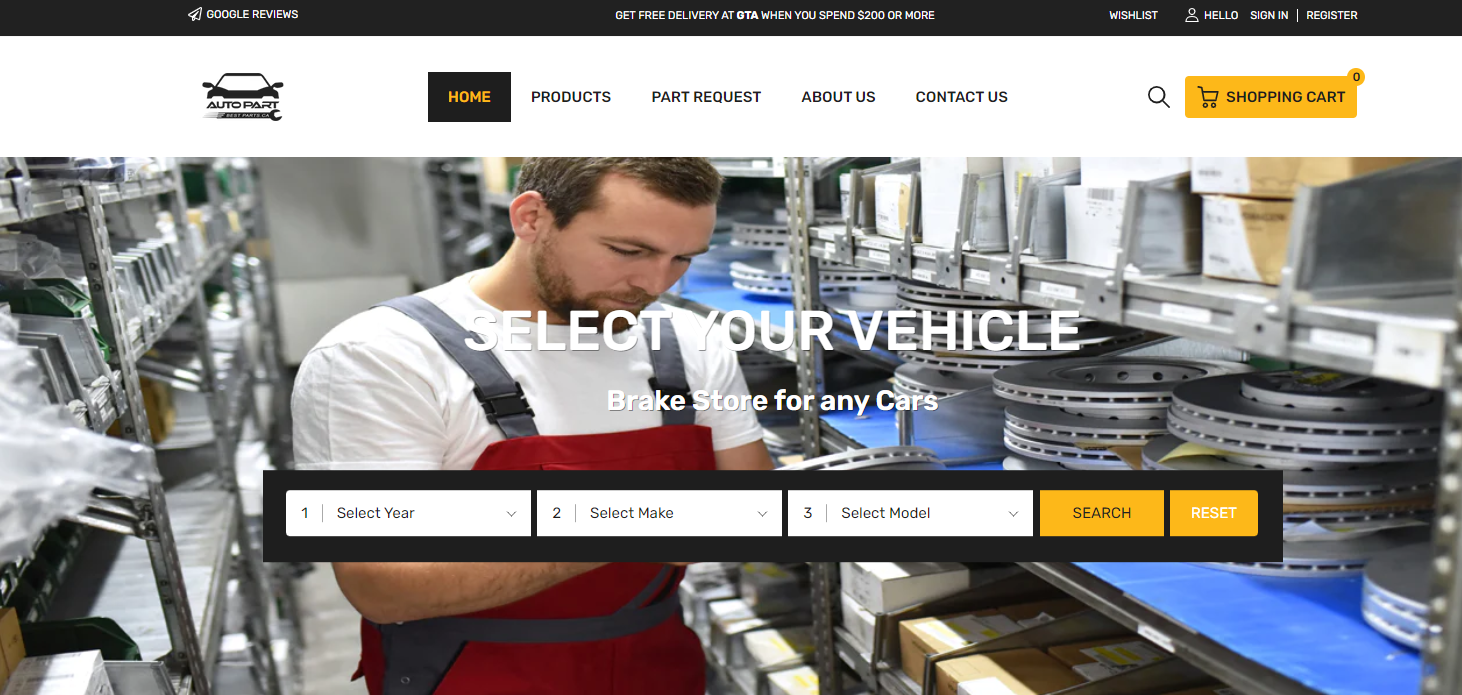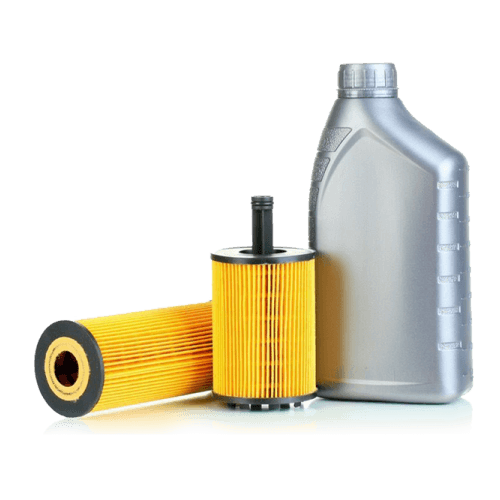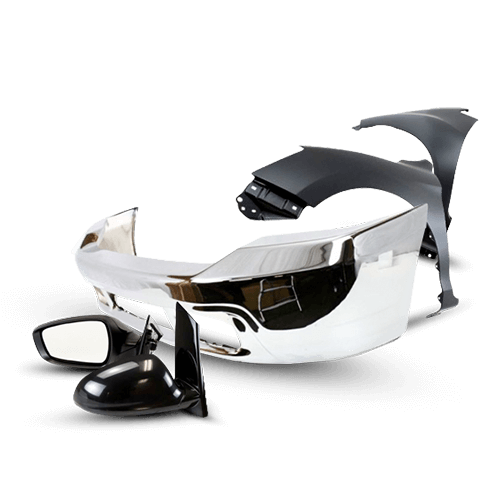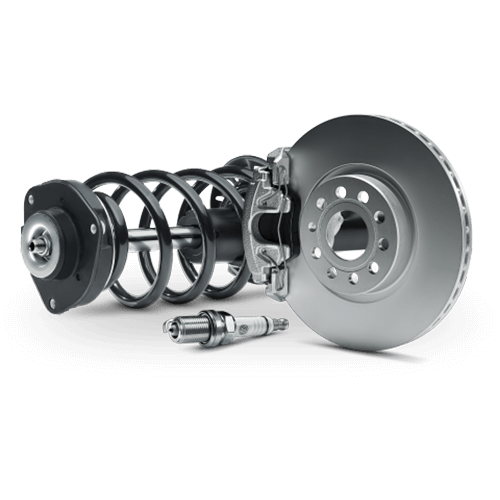
Explore Windshield Replacement Cost for Canadian Vehicle Owners
Key Takeaway
- Windshield replacement cost in Canada typically ranges from $200 to $600 for standard vehicles, with luxury and specialty vehicles costing $500 to $1,500 or more
- Insurance coverage often reduces or eliminates out-of-pocket expenses for windshield replacement in most Canadian provinces
- Front windshield replacement costs significantly more than rear windshield replacement due to advanced safety features and larger glass size
- Vehicle make, model, and features like rain sensors, heads-up displays, and advanced driver assistance systems substantially impact replacement costs
- Mobile windshield replacement services offer convenience without additional charges in most cases
Introduction
Understanding windshield replacement cost helps Canadian vehicle owners prepare for this common automotive expense and make informed decisions about repair versus replacement options. A damaged windshield compromises vehicle safety, affects structural integrity, and can result in traffic violations if visibility is impaired. Whether you drive a Honda Civic, Tesla Model 3, or Jeep Wrangler, knowing the expected costs for windshield replacement allows you to budget appropriately and evaluate service quotes effectively. This comprehensive guide examines all factors influencing windshield replacement expenses in Canada, from insurance coverage considerations to vehicle-specific pricing, helping you navigate this essential automotive service with confidence and clarity.

What Determines Windshield Replacement Cost
Multiple factors influence the total cost of windshield replacement for your specific vehicle. Glass type represents the primary cost variable, with modern windshields incorporating advanced technologies beyond simple laminated safety glass. Standard windshields without embedded features cost less than those with heated elements, rain sensors, lane departure warning systems, or heads-up display capabilities. Each additional feature increases manufacturing complexity and component costs significantly.
Vehicle make and model directly affect windshield pricing because each vehicle uses uniquely shaped glass designed to fit specific body contours and structural requirements. A compact sedan windshield contains less glass area and simpler curvature compared to a full-size SUV or pickup truck, resulting in lower material costs. Luxury vehicles often require OEM windshields to maintain proper fit and feature integration, while many mainstream vehicles accept quality aftermarket glass at reduced prices.
Labor costs constitute another significant expense component, though windshield replacement labor charges vary less dramatically than parts costs. Most professional installations require one to two hours regardless of vehicle type, with labor rates ranging from $50 to $150 depending on geographic location and service provider. Mobile windshield replacement services provide installation at your home or workplace, offering convenience without typically charging additional fees. The need for camera calibration after windshield replacement adds $100-300 to total costs for vehicles with advanced driver assistance systems that rely on forward-facing cameras mounted behind the windshield.
Average Windshield Replacement Costs in Canada
Understanding typical windshield replacement expenses helps you evaluate quotes and budget for this service. For standard passenger vehicles without advanced features, how much does a windshield replacement cost typically ranges from $200 to $400 when using quality aftermarket glass. This pricing includes both the windshield and professional installation labor. Original equipment manufacturer windshields from vehicle dealerships typically cost 30-50% more than comparable aftermarket options.
Vehicles with embedded features like rain sensors, heating elements, or antenna systems increase replacement costs to $300-600 for most mainstream brands. Luxury vehicles and those with sophisticated driver assistance systems requiring camera calibration can cost $500-1,500 or more for complete windshield replacement. These higher costs reflect both premium glass pricing and additional labor for proper feature integration and system calibration.
Geographic location within Canada affects windshield replacement pricing due to varying labor rates and market competition. Major urban centers like Toronto, Vancouver, and Montreal typically offer more competitive pricing due to numerous service providers, while rural or remote areas may experience higher costs due to limited provider options and potential travel charges. Many Canadians benefit from comprehensive insurance coverage that reduces or eliminates out-of-pocket windshield replacement expenses, making insurance coverage a critical consideration when evaluating actual costs. Using a windshield replacement cost estimator Canada tool from insurance providers or glass companies helps you get accurate quotes specific to your vehicle and location.

Front Windshield Replacement Cost
The front windshield replacement cost significantly exceeds rear window replacement expenses due to size differences, safety requirements, and integrated technology features. Front windshields contribute to vehicle structural integrity, supporting roof strength during rollover accidents and providing proper airbag deployment in frontal collisions. These safety requirements mandate specific glass types and installation procedures that increase both material and labor costs.
Modern front windshields incorporate laminated safety glass consisting of two glass layers bonded to a plastic interlayer that prevents shattering and maintains visibility after impact. This multi-layer construction costs more to manufacture than the tempered glass typically used in rear and side windows. Additionally, front windshields contain the majority of embedded features like rain sensors, heating elements, and camera mounting points for advanced driver assistance systems, all contributing to higher replacement costs.
Professional installation for front windshield replacement requires proper adhesive application, correct positioning, and adequate curing time to ensure structural integrity and water seal reliability. Most installations take one to two hours for the physical replacement, with an additional 24 hours recommended before driving to allow adhesive to cure fully. Vehicles requiring camera calibration need additional service time and specialized equipment, adding to total costs. Quality installation directly affects both safety and long-term reliability, making professional service essential despite higher costs compared to DIY alternatives.
Rear Windshield Replacement Cost
The rear windshield replacement cost typically ranges from $200 to $500 for most vehicles, generally costing 20-40% less than front windshield replacement. Rear windows use tempered glass rather than laminated safety glass, reducing material costs while still providing adequate strength and safety for their application. Tempered glass breaks into small, relatively harmless pieces rather than dangerous shards, offering appropriate safety characteristics for rear and side vehicle windows.
Rear windshield installation often proves simpler than front windshield replacement because fewer integrated features require connection or calibration. However, rear windows with defrost elements require proper electrical connection to maintain defogging functionality. Some vehicles use rear wiper systems that necessitate proper seal and bracket installation. Despite these considerations, rear windshield replacement generally requires less time and technical expertise compared to front windshield service.
Vehicle design affects rear windshield replacement complexity and cost. Vehicles with steep rear window angles or complex curves may require more expensive glass and additional installation time. Hatchbacks, station wagons, and SUVs with large rear glass areas typically cost more to replace than sedan rear windows. Nevertheless, rear windshield replacement remains significantly more affordable than front windshield service for equivalent vehicles, making cost comparison between front and rear replacement straightforward.

Vehicle-Specific Windshield Replacement Costs
Different vehicle makes and models have varying windshield replacement expenses based on glass size, shape complexity, and integrated features. Understanding costs for your specific vehicle helps you budget appropriately and evaluate service quotes from multiple providers. The following breakdowns provide realistic cost expectations for popular vehicles in the Canadian market.
Honda Civic Windshield Replacement Cost
The Honda Civic windshield replacement cost typically ranges from $250 to $450 for quality aftermarket glass with professional installation. As one of Canada's most popular compact sedans, the Civic benefits from excellent parts availability and competitive pricing among aftermarket glass suppliers. Standard Civic models without advanced driver assistance systems fall at the lower end of this range, while newer models with Honda Sensing features requiring camera calibration may reach the higher end.
Honda Civic windshields use relatively straightforward shapes without extreme curvature, contributing to moderate manufacturing and installation costs. Aftermarket glass manufacturers produce high-quality Civic windshields meeting or exceeding original equipment specifications, providing excellent value compared to Honda OEM glass that typically costs $400-600 installed. Most professional installers complete Civic windshield replacement in approximately 90 minutes, with additional time required for camera calibration on equipped models.
Mobile windshield replacement services readily serve Honda Civic owners throughout Canada, offering convenient installation at home or work locations. The Civic's popularity ensures most glass companies maintain Civic windshields in local inventory, minimizing wait times for service. Many insurance companies approve aftermarket glass for Civic windshield claims, reducing or eliminating policyholder costs while maintaining quality and safety standards.
Toyota Corolla Windshield Replacement Cost
The Toyota Corolla windshield replacement cost ranges from $250 to $500 depending on model year and feature content. Similar to the Honda Civic, the Corolla's status as a best-selling compact sedan ensures widespread parts availability and competitive pricing. Older Corolla models without embedded features typically cost $250-350 for aftermarket windshield replacement, while newer models with Toyota Safety Sense systems requiring calibration may cost $400-500 complete.
Quality aftermarket windshields for the Corolla provide reliable performance and durability at costs 30-40% below Toyota OEM glass pricing. The Toyota windshield replacement cost across the brand's lineup varies significantly based on vehicle size and features, with compact models like the Corolla offering the most affordable replacement options. Larger Toyota vehicles like the Highlander or 4Runner require substantially more glass and may include more sophisticated features, increasing replacement costs accordingly.
Professional installers familiar with Toyota vehicles complete Corolla windshield replacement efficiently, typically finishing installations in 60-90 minutes before calibration procedures. The straightforward windshield shape and well-documented installation procedures allow most professional glass shops to service Corollas confidently. Insurance coverage typically includes aftermarket glass options for Corolla windshield replacement, making this service affordable or free for most policyholders with comprehensive coverage.
Honda Windshield Replacement Cost
The Honda windshield replacement cost across the brand's entire lineup ranges from $250 to $800 depending on specific model and features. Compact models like the Civic and Fit represent the most affordable options, while midsize vehicles like the Accord cost $300-500 and larger vehicles like the Pilot or Odyssey range from $400-700. Honda's widespread popularity in Canada ensures excellent aftermarket parts availability across all models, keeping costs competitive.
Honda Sensing advanced driver assistance systems appear across most current Honda models, requiring forward-facing camera calibration after windshield replacement. This calibration adds $100-250 to total replacement costs depending on service provider and calibration method used. Some installers include calibration in their total price quote, while others charge separately for this service. Verifying whether calibration costs are included helps avoid surprise expenses when comparing quotes.
Mobile service providers throughout Canada offer Honda windshield replacement with proper calibration capabilities, bringing convenience directly to customers. The combination of competitive parts pricing and efficient installation procedures makes Honda windshield replacement relatively affordable despite sophisticated safety features. Choosing quality aftermarket glass from reputable manufacturers ensures proper fit and feature integration while providing significant savings compared to Honda dealership OEM glass pricing.
Mazda 3 Windshield Replacement Cost
The Mazda 3 windshield replacement cost typically ranges from $250 to $500 for professional installation with quality aftermarket glass. Mazda's compact sedan uses moderately sized windshields without extreme curvature, resulting in reasonable material costs. Standard Mazda 3 models without advanced features fall toward the lower end of this price range, while models equipped with i-ACTIVSENSE safety systems requiring calibration reach higher price points.
Mazda windshield shapes incorporate stylish curves that enhance vehicle aesthetics while maintaining reasonable manufacturing costs. Quality aftermarket suppliers produce Mazda 3 windshields that fit properly and maintain optical clarity matching original equipment. The availability of multiple aftermarket options creates price competition that benefits consumers, with most installers offering Mazda 3 windshield replacement at costs well below dealership OEM glass pricing.
Professional installation for the Mazda 3 typically requires 60-90 minutes, with additional time for camera calibration on equipped models. Most insurance companies approve aftermarket glass for Mazda 3 windshield claims, making replacement affordable or free for policyholders with comprehensive coverage. The combination of reasonable parts costs and efficient installation makes Mazda 3 windshield replacement one of the more affordable services among popular compact sedans.
Tesla Windshield Replacement Cost
The Tesla windshield replacement cost significantly exceeds conventional vehicle expenses, typically ranging from $900 to $1,800 depending on model and service provider. Tesla vehicles incorporate sophisticated windshields with unique shapes, acoustic lamination for noise reduction, and integration with advanced driver assistance features. The Model 3 and Model Y use large, steeply raked windshields that require expensive glass and careful installation procedures.
Tesla's panoramic windshield designs extend further back over the passenger compartment compared to conventional vehicles, increasing glass surface area and complexity. These design choices create striking interior aesthetics but result in higher replacement costs due to increased material requirements and manufacturing complexity. Additionally, Tesla windshields must integrate properly with Autopilot cameras and sensors, requiring precise installation and calibration performed by trained technicians using Tesla-approved procedures.
Service options for Tesla windshield replacement remain more limited compared to mainstream vehicles. Tesla service centers perform windshield replacement using OEM glass, though some independent glass companies now offer Tesla windshield service with aftermarket or OEM glass options. Insurance coverage becomes particularly valuable for Tesla owners given the high replacement costs. Some policies may require using Tesla service centers, while others approve qualified independent installers, affecting both convenience and potential out-of-pocket expenses.
Jeep Wrangler Windshield Replacement Cost
The Jeep Wrangler windshield replacement cost ranges from $300 to $600 for most model years, with variations based on specific generation and features. The Wrangler's relatively flat windshield design simplifies manufacturing compared to curved windshields on many modern vehicles, but the larger glass size for visibility in off-road applications increases material costs. Older Wrangler models without advanced features typically cost $300-400 for replacement, while newer models with safety systems requiring calibration may reach $500-600.
Jeep's off-road heritage means Wrangler owners frequently face windshield damage from trail debris, making replacement a common service need. The Jeep windshield replacement cost across the broader Jeep lineup varies significantly, with other models like the Grand Cherokee costing $350-700 and the Gladiator pickup ranging from $350-650. All Jeep models benefit from good aftermarket glass availability, though some owners prefer OEM windshields for assured quality and fit.
Mobile windshield replacement services readily serve Jeep Wrangler owners, offering convenient installation without requiring shop visits. The Wrangler's accessible windshield design and straightforward mounting system allow efficient replacement by experienced technicians. Many Wrangler owners maintain comprehensive insurance specifically because of frequent windshield damage risks, making insurance coverage particularly valuable for this vehicle. Choosing a reputable installer ensures proper seal and structural integrity essential for both on-road and off-road driving conditions.
Understanding Glass Quality and Pricing Options
Windshield quality significantly affects both initial replacement costs and long-term satisfaction. Original equipment manufacturer glass ensures exact fit and feature compatibility but typically costs 30-50% more than quality aftermarket alternatives. OEM windshields come directly from the same manufacturers supplying vehicle factories, guaranteeing precise specifications and quality standards. This assurance provides peace of mind but comes at premium pricing that many vehicle owners find difficult to justify.
Quality aftermarket windshields manufactured by reputable companies meet or exceed safety standards while offering substantial cost savings. Major aftermarket glass manufacturers invest in precise molds and quality control processes that produce windshields fitting properly and maintaining optical clarity matching OEM glass. Certifications from organizations like the Auto Glass Safety Council ensure installers follow proper procedures regardless of glass origin, making quality aftermarket glass a reliable and economical choice for most vehicles.
Economy aftermarket windshields represent the lowest-cost option but may compromise on optical quality, fit precision, or durability. These budget windshields sometimes exhibit distortion, fit gaps, or shorter lifespan compared to premium options. While attractive for older vehicles or tight budgets, economy windshields may create long-term dissatisfaction or require earlier replacement. Most vehicle owners find the best value in mid-range aftermarket windshields from established manufacturers that balance cost savings with reliable quality and proper fit.
Insurance Coverage for Windshield Replacement
Insurance coverage dramatically affects actual out-of-pocket windshield replacement cost for most Canadian vehicle owners. Comprehensive auto insurance typically covers windshield damage from rocks, debris, vandalism, or weather events. Many provinces require insurance companies to waive deductibles for windshield repair, while windshield replacement may require deductible payment depending on specific policy terms and provincial regulations.
In provinces like Ontario and Nova Scotia, insurance regulations may allow deductible-free windshield replacement under certain circumstances, reducing or eliminating policyholder costs. Alberta and British Columbia have different insurance structures affecting windshield coverage terms. Understanding your specific policy coverage before windshield damage occurs allows you to make informed decisions when replacement becomes necessary. Contacting your insurance provider immediately after discovering windshield damage ensures proper claim filing and clarification of coverage terms.
Insurance companies often specify approved installers or glass types for coverage purposes. Some policies require using their preferred installer network for deductible-free service, while others allow customer choice of installer with equivalent coverage. Verifying installer approval with your insurance company before scheduling service prevents coverage surprises. Most insurance companies approve quality aftermarket glass, recognizing that modern aftermarket windshields meet safety standards while reducing claim costs. This approach benefits both insurers through lower expenses and policyholders through accessible service options.
DIY Windshield Replacement Considerations
While some automotive repairs suit do-it-yourself approaches, windshield replacement generally requires professional service for safety and quality results. Proper windshield installation demands specific adhesives, application techniques, and curing procedures critical to structural integrity and water seal reliability. Incorrectly installed windshields compromise vehicle safety by reducing roof strength during rollovers and affecting proper airbag deployment during frontal collisions.
The specialized tools required for professional windshield replacement include power cutting tools for adhesive removal, primers and activators for proper adhesive bonding, and calibrated application equipment for consistent adhesive beads. These tools represent significant investment that makes economic sense only for professional installers performing multiple replacements. Additionally, windshield handling requires careful technique to avoid breakage and proper positioning for correct fit, skills developed through training and experience.
Vehicles with advanced driver assistance systems requiring camera calibration after windshield replacement absolutely require professional service with proper calibration equipment. Attempting DIY windshield replacement on these vehicles risks leaving safety systems improperly calibrated, creating dangerous conditions where safety features may not function correctly. The relatively affordable cost of professional windshield replacement compared to potential safety risks and installation challenges makes professional service the clear choice for virtually all vehicle owners.
How to Reduce Windshield Replacement Costs
Several strategies help minimize your windshield replacement expenses without compromising quality or safety. First, review your insurance coverage to understand windshield replacement benefits and deductible requirements. Many policyholders discover they have better windshield coverage than expected, potentially reducing or eliminating out-of-pocket costs. Filing insurance claims for windshield replacement typically doesn't affect premiums in most provinces, making insurance utilization financially advantageous.
Comparing quotes from multiple installers ensures competitive pricing for your specific vehicle. Requesting quotes from both national chains like Speedy Glass and local independent installers reveals price variations that may save significant money. The Speedy Glass windshield replacement cost typically aligns with industry averages but may vary based on promotions or package deals. However, consider installer reputation and warranty offerings alongside pricing, as the cheapest quote may not represent the best value if quality or service suffers. Reading customer reviews and verifying proper insurance and certifications helps identify reputable installers offering fair pricing.
Choosing quality aftermarket windshields rather than OEM glass reduces costs by 30-50% while maintaining safety and performance standards. Verify that aftermarket windshields include necessary features like rain sensors, heating elements, or antenna systems matching your vehicle's equipment. Some installers offer tiered pricing with different glass quality levels, allowing you to select the option balancing cost and quality for your needs. Timing replacement during promotional periods or requesting package pricing for additional services may also yield savings opportunities from some providers.
Preventing Windshield Damage
Proactive measures reduce windshield damage frequency, lowering long-term replacement costs and avoiding inconvenience. Maintaining proper following distance, especially behind trucks or construction vehicles, reduces rock impact risks. Debris kicked up by vehicles ahead represents the most common cause of windshield damage, making distance maintenance particularly important on highways and construction zones.
Parking choices affect windshield damage risks, with covered or shaded parking protecting glass from hail damage, falling branches, and extreme temperature fluctuations. Avoiding parking under trees reduces risks from falling branches, tree sap, and bird droppings that can affect windshield condition. During winter months, using proper ice removal techniques prevents stress cracks caused by scraping frozen glass or applying hot water to cold windshields.
Regular windshield inspection allows early detection of small chips or cracks that can be repaired before they expand into damage requiring full replacement. Most chips smaller than a quarter can be repaired for $50-150, far less than replacement costs. Many insurance policies cover windshield repair without deductibles, making prompt repair financially sensible. Addressing minor damage quickly prevents crack propagation from vibration, temperature changes, or additional impacts that turn repairable damage into replacement-requiring breaks.
When to Repair vs Replace Your Windshield
Understanding when windshield repair suffices versus requiring full replacement helps you make appropriate decisions and potentially save significant money. Small chips and cracks meeting specific criteria can typically be repaired effectively, restoring structural integrity and preventing further damage. Repaired windshields maintain safe use while costing far less than replacement, making repair the preferred option when appropriate.
Windshield repair works best for damage smaller than a dollar coin, located outside the driver's direct line of sight, and not penetrating through both glass layers. Single impact chips, star breaks, and short cracks respond well to professional repair using resin injection techniques that fill damage and prevent expansion. Repair typically costs $50-150 and takes 30-60 minutes, with insurance often covering full costs without deductible application.
Windshield replacement becomes necessary when damage exceeds repair criteria. Large cracks longer than six inches, damage in the driver's vision area, or breaks penetrating through both glass layers require replacement for safety and visibility reasons. Multiple chips weakening overall windshield integrity also necessitate replacement. Any damage affecting windshield structural integrity or causing significant visibility impairment requires replacement regardless of size. Professional glass technicians assess damage and recommend appropriate repair or replacement based on established safety standards.
Frequently Asked Questions
How much does windshield replacement cost in Canada?
The average windshield replacement cost in Canada ranges from $200 to $600 for standard vehicles with aftermarket glass, while luxury vehicles or those with advanced features cost $500 to $1,500 or more. Insurance coverage often reduces or eliminates out-of-pocket expenses for most Canadian policyholders. Mobile service typically includes no additional charges compared to shop-based replacement.
Does insurance cover windshield replacement in Canada?
Most comprehensive auto insurance policies cover windshield replacement, though deductible requirements vary by province and policy. Many provinces have regulations requiring deductible-free windshield repair, while replacement coverage terms differ. Contact your insurance provider to verify specific coverage details before scheduling service.
How long does windshield replacement take?
Professional windshield replacement typically requires one to two hours for the actual installation process, with adhesive needing 24 hours to cure fully before safe driving. Vehicles requiring camera calibration may need additional time for this procedure. Most mobile services complete installations at your location during a single appointment.
Can I use aftermarket glass instead of OEM for my windshield?
Quality aftermarket windshields meet safety standards and fit properly on most vehicles, costing 30-50% less than OEM glass. Most insurance companies approve aftermarket glass for claims, making this an economical choice for many owners. Verify that aftermarket options include all features like rain sensors or heating elements matching your vehicle.
What's the difference between front and rear windshield replacement costs?
Front windshield replacement cost typically exceeds rear window replacement by 20-40% due to larger size, laminated safety glass requirements, and integrated features. Front windshields contribute to vehicle structural integrity and often contain cameras, sensors, and other technology requiring proper installation and calibration. Rear windows use simpler tempered glass with fewer integrated features.
Do I need camera calibration after windshield replacement?
Vehicles with advanced driver assistance systems using forward-facing cameras mounted behind the windshield require calibration after replacement to ensure proper system operation. This calibration adds $100-300 to total costs but is essential for safety system functionality. Verify whether your vehicle requires this service when obtaining replacement quotes.






















































